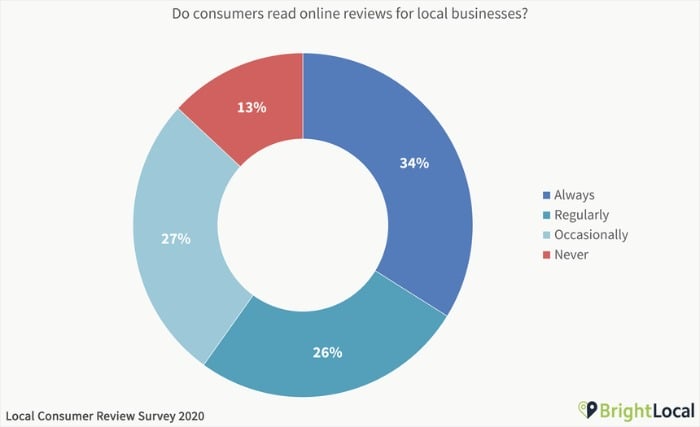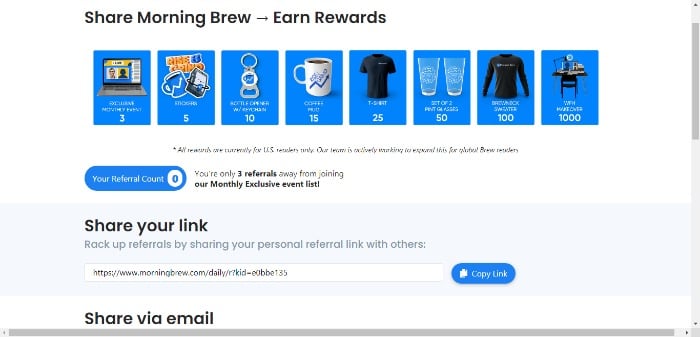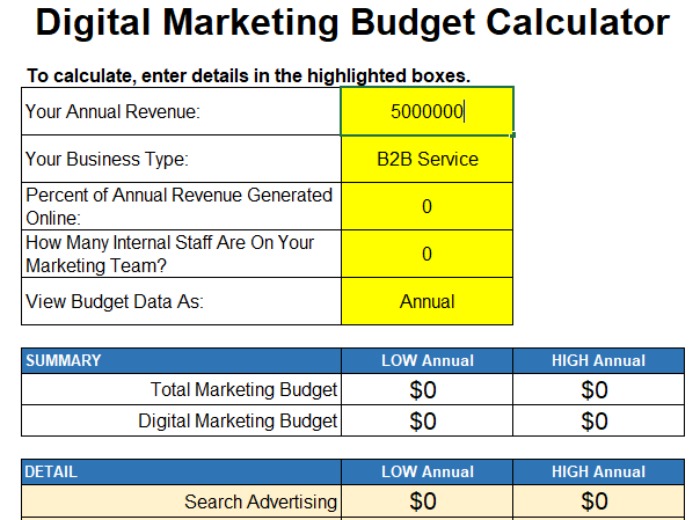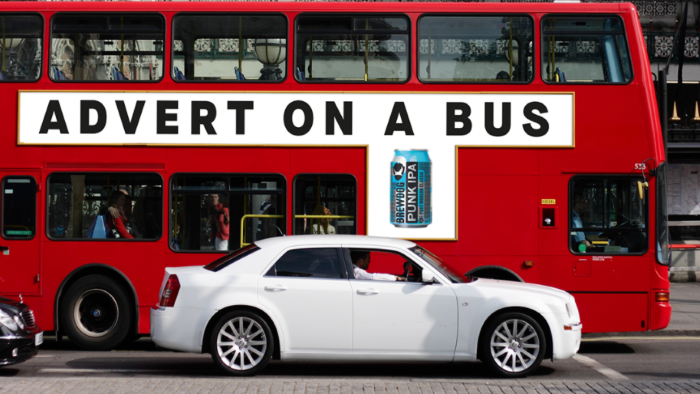
Word-of-mouth marketing is one of the most valuable forms of advertising. After all, why wouldn’t you want customers to rave about your business to friends and family?
Word-of-mouth referrals are great advertising for your brand and an enormous confidence booster for would-be buyers. From a potential buyer’s perspective, if your existing customers are happy enough with your company to recommend it, that speaks volumes about your business.
It’s not just about getting customers, though. When you secure buyers through word-of-mouth referrals, they are likely to spend more, it helps consumers make the buying decision, and above all, shoppers trust their friends when it comes to recommendations.
Ninety-two percent of customers say they’d buy based on the recommendations of their friends and family. Not only that, but more people are reading online reviews than ever before, according to BrightLocal.

That’s why you want to encourage your satisfied customers to promote your business by sharing their positive experiences.
However, getting those word-of-mouth referrals isn’t so easy. Here’s how to encourage customers to spread the word.
How to Convince Your Customers to Give You Word-of-Mouth Referrals
Ideally, word-of-mouth marketing achieves two goals: encourage your customers to make word-of-mouth referrals to friends and (ideally) pass on their friends and family member’s details so you can market to them directly.
The following tips help you with both these goals.
Provide the Best Experience Possible
You won’t gain word-of-mouth referrals if you provide a poor experience. Today, the customer experience is one of the most crucial parts of the sales process, especially when it comes to word-of-mouth recommendations and social sharing.
When you’re seeking continual growth, brand advocacy, and retention, the simplest strategy is to provide a stellar customer experience.
Deliver Quality Every Time
If you’ve spent even a few minutes online, you’ve likely seen negative reviews. There’s a good chance they’ve stopped you buying from a business, too.
When you’ve got dissatisfied customers, they don’t stop at telling their friends and family: they often go online and write a bad review. Even worse, they go on social media and detail their poor experience for an even wider audience to see.
Deliver quality every time and if your products and services are falling short, own the problem and fix it.
Just keep in mind that a few bad reviews won’t tank your business, just respond politely, and you’ll still reap the benefits of word-of-mouth marketing.
Start a Referral Program
Want a tried and tested way to get your regular shoppers to recommend others? Then start a referral program. Start by creating an appealing offer for your customers. Maybe a discount for each new person they refer, prizes for referring a certain amount of people, or a small commission.
A great example of this is the Morning Brew newsletter. It gives incentives like merchandise and monthly exclusive events and makes it easy for their existing readers to spread the word.

Subscribers to the newsletter click on the blue “click to share” button, and they’re taken to a referral link, an email invitation, and social media buttons for sharing.
Promote Engagement Through User-Generated Content
Gain attention and engagement with user-generated content. Of course, UGC advertising won’t always start organically, so give your customers a nudge by launching an official campaign.
Netflix, Starbucks, and Adobe are three companies doing this well. Whether it’s launching contests, creating branding advocates, or encouraging social shares, you’ll learn a lot from these brands and the methods they use.
Get Behind a Cause
Another way to get your customers to bring in word-of-mouth referrals is to get behind a cause. This could be something close to your company’s heart, a local non-profit, or a high-profile fundraising event.
Consumers are always keen to spread the word about a good cause, which means there’s an excellent chance they’ll pass it on to friends, family, co-workers.
How to Target Word-of-Mouth Referred Customers in Paid Ads
There’s organic word-of-mouth marketing, then there are amplified word-of-mouth referrals, where you launch paid online campaigns to maximize your marketing efforts. Below is a step-by-step guide on how to target referred customers with paid ads.
1. Choose an Ad Platform
You’re looking for a platform where your typical audience hangs out. For instance, if you’re targeting a younger audience, you might choose Instagram. TikTok is another option that is popular with the under-thirties.
For older age groups, Facebook could be ideal. If it’s business-related, then LinkedIn is your obvious choice.
2. Set a Goal and Budget
Each social media platform offers paid advertising. For example, Twitter has its promoted and follower ads and there’s no minimum budget.
Before deciding on your campaign budget, be clear on your business goals. For instance, is it gaining newsletter subscribers? Or sign-ups for a free trial? Whichever goal you choose, make it measurable and trackable.
Also, think about your ideal ROI and the percentage of your digital marketing budget you’re willing to spend.
The ideal number is 15-25 percent of the business’s overall digital marketing budget, according to Web Strategies. To make this part easier, Web Strategies provides a free digital marketing budget calculator.

3. Offer an Incentive
Offer your prospects an incentive—and make sure to put some thought into it. You’re looking for something your prospect finds useful and helps you reach your business aims. For example, if you want newsletter subscribers, consider an e-book with hot tips or a cheat sheet related to your business or industry.
Cheat sheets and e-books work well because you can create them once and then automate their delivery. Another example is discount vouchers for sharing their thoughts. Be sure to make your discount time-sensitive to create a sense of urgency.
4. Write Your Ad
Next, write your ad. Your first step is ensuring you’re using the language that resonates with your audience. However, there are other factors to consider in your ads, such as:
- clearly communicating your offer
- keeping your social media copy consistent with your overall tone/brand voice
- using complementary imagery and graphics
- including targeted keywords
- using targeted ads to personalize them to your ideal audience
Don’t be afraid to get creative. As you’ll see in the word-of-mouth advertising examples below, creativity is a great way to get customers talking.
5. Track, Test, and Try Again
Finally, test and track your campaigns and evaluate the results. Specific areas to test include:
- CTAs (Call to Actions)
- colors
- content
- visuals
Remember evaluating and A/B testing are ongoing processes, so keep tracking and testing over time. If your ads aren’t delivering your desired results, then tweak as needed and try again.
Examples of Ad Campaigns for Word-of-Mouth Referrals
Media-savvy companies know what it takes to get people talking about their adverts and sharing them. Although the following ads are offline commercials, they use the same approach in their digital marketing and social media efforts.
Let’s look at a few of the best examples of word-of-mouth advertising.
Coca-Cola
Coca-Cola has done more than its fair share of word-of-mouth advertising campaigns, from personalized bottles to broader issues like social isolation. However, the brand took its advertising to a new level with its Coca-Cola bears reacting to a Super Bowl in real-time.
The result? Everyone loved it. They felt like they were part of the Superbowl and part of the conversation. Apart from drawing viewers in, what made the advert so effective was those happy viewers were quick to share it with their friends and keep the word-of-mouth referrals going.
The advert worked so well because it engaged viewers from the first look, and the novelty value made consumers keen to pass it on.
BrewDog
The UK-based company BrewDog isn’t just great at developing craft beers. They’re also pretty good at creating share-worthy campaigns. You know, the kind of ads that get customers talking—and sharing.
A while ago, BrewDog put together “the most honest advert you’re ever going to see.”
BrewDog went with the bare basics rather than spending a small fortune on glitzy campaigns, including an image of their product, loud music, and not much else. BrewDog then teamed its adverts with an equally bland billboard and bus campaign.

As BrewDog itself put it:
Other brands spend big here investing in massive narratives, intricate Game of Thrones-themed visuals and slick films.
So we didn’t.
Crucially though, BrewDog’s advert was shown in the ad breaks of TV shows or events that get vast audiences, like Game of Thrones and the FA Cup Football Tournament.
By defying convention BrewDog, got itself noticed, even without spending vast amounts of money on its advertising.
In addition, the company isn’t scared of mixing it up or of courting controversy. And as everyone knows, controversy gets us talking, especially in the days of social media.
Despite its varying approaches, one thing that remains consistent with BrewDog is its dedication to revolutionizing the craft beer industry. In other words, whichever angle BrewDog takes, it stays true to its values.
Cadbury
It’s no secret that word-of-mouth saved Cadbury from an uncertain future. After a salmonella outbreak left the company reeling, it came back with a strong marketing campaign.
It wasn’t your typical Cadbury’s advert, which may be why it worked so well in turning Cadbury’s reputation around.
The advert, which featured a chimpanzee playing drums along with Phil Collins’ “In the Air Tonight” got everyone talking.
Then there was the big question people are still asking today: is it really Phil Collins in the chimpanzee outfit? (The answer’s “no,” by the way.)
Aside from making Coca-Cola, BrewDog, and Cadbury all have something else in common. They all use the same level of creativity in their social media campaigns, engaging users and inspiring them to share content.
What can you learn from these brands? Daring to be different, changing styles, and being novel enough to get people talking gets customers sharing is something every business can do.
How to Track the Success of Word-of-Mouth Paid Ad Campaigns
How do you track the metrics for your word-of-mouth campaigns? Although you might have a bit less data than you do for your website, there are plenty of ways to track your success.
- Track your UTMs
Urchin Tracking Modules show you how visitors interact with your website. Use tracking tools like Heap Analytics to monitor website visits and add UTMs to your ads and social media posts.
- Monitor impressions
How often are paid ads viewed, and what do the impressions tell you regarding your campaign’s reach?
- Measure referral traffic
If you’re running an affiliate or referral scheme, how many impressions, click-throughs, and sign-ups are you attracting? Use affiliate tracking software to do this.
- Conduct a competitive analysis
What keywords are your competitors targeting? Use a free or paid keyword research tool to find out, like Ubersuggest or the Ubersuggest Chrome extension.
Word-of-Mouth Referrals FAQs
By tracking metrics like UTMs, impressions, and through competitive analysis.
Apart from directly asking customers, you can offer rewards, encourage UGC and online reviews, and consider fundraising for a good cause. Paid ads can also be highly effective, when used carefully.
Word-of-mouth referrals are vital because potential buyers trust the opinions of friends and family. Word-of-mouth customers also tend to spend more money.
Organic word-of-mouth referrals are free, and you get them through reviews, links, USG, social media, etc. With amplified word-of-mouth advertising, you’re paying for targeted ads.
Word-of-Mouth Referrals Conclusion
Word-of-mouth referrals are an effective method for attracting and retaining customers. When people are spreading the word about your business, whether through reviews, referrals, or UGC, they’re doing your marketing and getting the word out to a wider audience.
Consumers trust their friends’ judgments more than anything else. That’s why word-of-mouth referrals are crucial to grow your brand.
While you could take the organic approach, you can also use accelerated word-of-mouth campaigns to gain customers’ attention and target them directly.
Whichever approach you take, remember tracking your metrics is vital for measuring the effectiveness of your campaigns.
Do you use word-of-mouth marketing? Which tactics do you use?
from Neil Patel https://ift.tt/3wMXzoy
